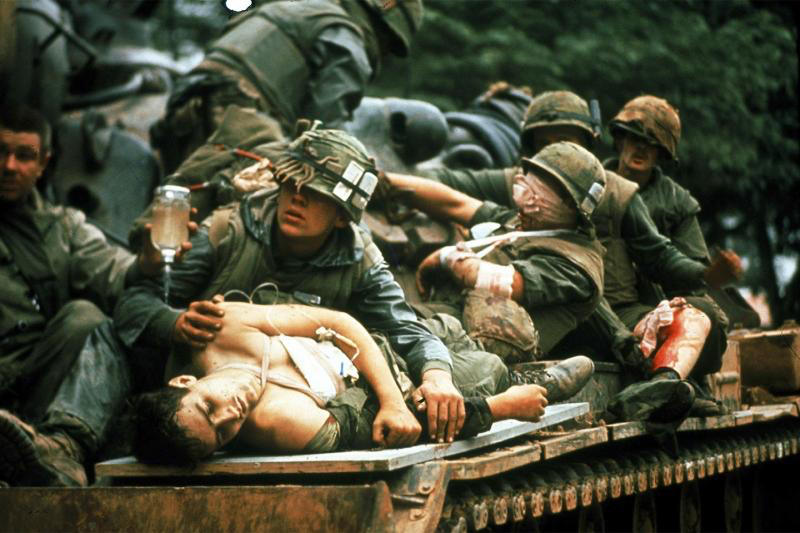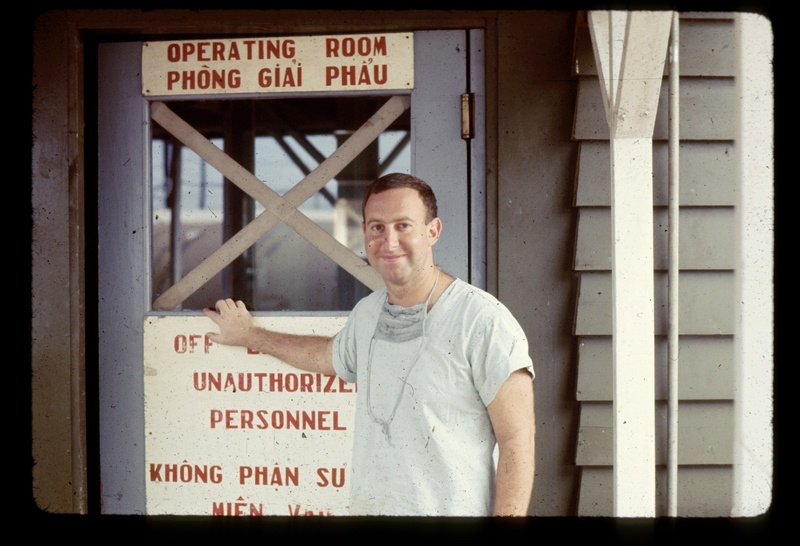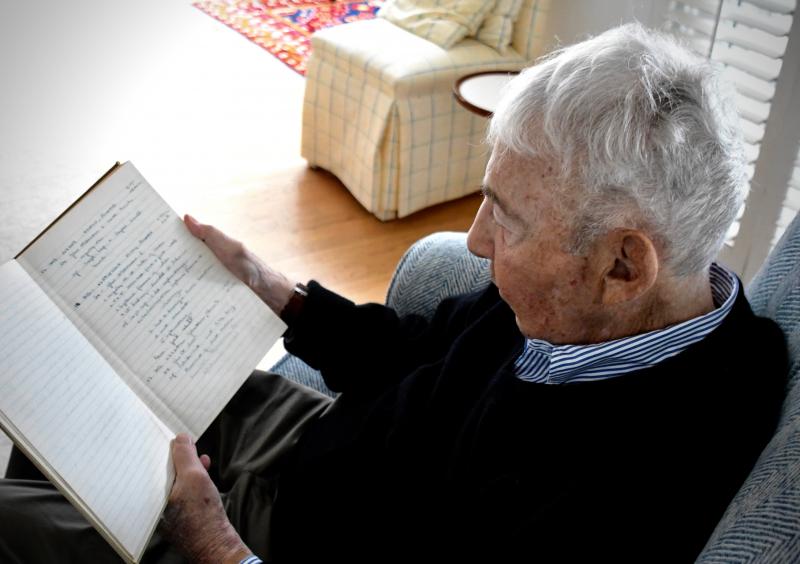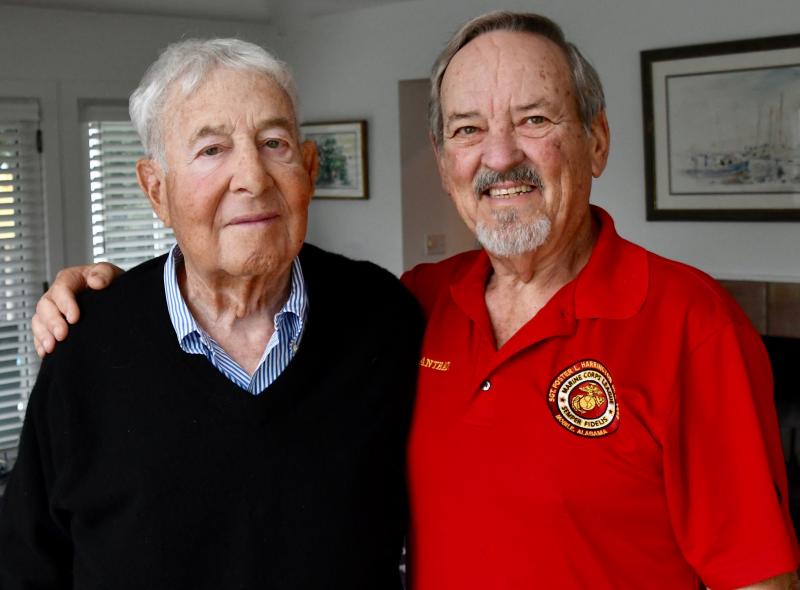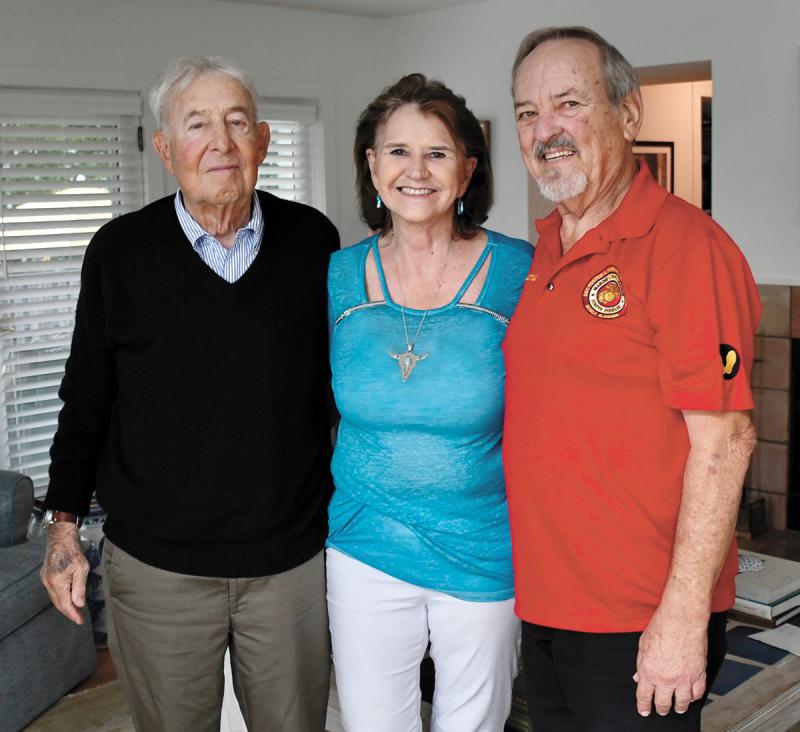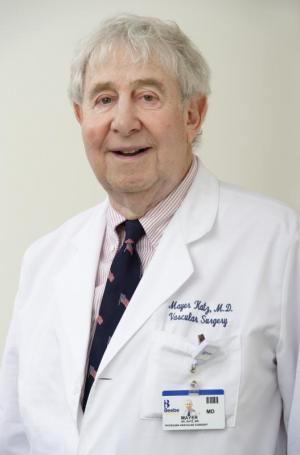After 54 years, Vietnam vet and doctor finally meet
This story has all of the elements of a great Hollywood movie.
An 18-year-old Marine seriously wounded during the Vietnam War's bloodiest battle.
An almost unbelievable series of events during his evacuation from the battlefield to a nearby field hospital.
A combat photographer capturing one of the most iconic images of the entire war.
A young combat surgeon who saved the Marine's life.
The Marine's long road to recovery and trying to come to terms with what he experienced and saw in the jungles of Vietnam.
And then, a reunion more than five decades in the making thanks to another series of incredible events.
The combat surgeon, retired Beebe Healthcare vascular surgeon Dr. Mayer Katz, and the Marine, Alvin Bert “A.B.” Grantham of Mobile, Ala., share a bond that borders on the unimaginable.
Fifty-four years ago, Grantham was severely wounded during the bloodiest battle of the Vietnam War in Hue after a little more than three months in combat.
On his way to be evacuated to a field hospital, Stars and Stripes photographer John Olson captured him with other wounded Marines riding on an M-48 tank. As the focal point of the photograph, Grantham's image, known as The Marine on the Tank, became an iconic symbol of the war and the sacrifices young men were making in Vietnam. It appeared as a two-page foldout with more of Olson’s photographs in Life magazine in March and was then published in newspapers and magazines around the world. Olson received the Robert Capa Award for those photographs.
While the photograph is a story within itself, Grantham's story has a much more significant chapter. Suffering from a sucking chest wound, he ended up on Katz's operating table at a Marine field hospital on Feb. 17, 1968. It was the northernmost field hospital in South Vietnam, not far from the demilitarized zone. “We were rocketed at least three or four nights a week,” Katz said.
Katz served as a captain and surgeon in the Mobile Army Surgical Hospital program in Vietnam from July 1967 to August 1968.
During the battle of Hue
As a member of Charlie Company in the First Battalion of the 5th Marine Regiment, Grantham was sent to Hue.
The 18-year-old Grantham was shot in the chest as he fired a machine gun from the second-story window of a home in downtown Hue.
The bullet entered just to the right side of his chest, tore through the lower lobe of his right lung and exited his back near his shoulder blade.
A fellow Marine serving with Grantham had the presence of mind to take the cellophane off his pack of cigarettes and stuff it into the wound. The Marine put a 2-square-inch piece of gauze over the cellophane and wrapped an elastic bandage around his chest, anchoring it around his neck.
Another Marine kicked down a door to be used as a stretcher.
Earlier in the day, Grantham had helped remove three wounded members of his platoon from inside a house.
A long road to recovery
“I was not aware of everything that was going on. I thought I was on a truck on the longest and roughest ride I ever had in my life,” Grantham said. The ride from the center of Hue to the triage area was actually about 20 minutes. He was then placed on a helicopter for the short ride to Katz's operating room.
As he was being prepared to be airlifted from the battle field to the field hospital, he was placed in a body bag. “They thought I wasn't going to make it and then I heard a corpsman say that this one is not dead yet. He was getting ready to zip me in,” Grantham said.
In the operating room, Katz said, he removed two of Grantham's ribs and part of his right lung. He also inserted two large chest tubes to drain the wound. He said the bullet entered Grantham’s chest, just missing his heart and exiting out the right side.
Katz was able to stabilize Grantham enough so he could be airlifted first to the Navy Hospital Ship Repose and then to a military hospital in Yokohama, Japan.
Suffering from intense pain, Grantham doesn’t remember much once he entered the field hospital. Sedation helped ease his pain and he awoke aboard the hospital ship.
Grantham's recovery journey was a long one. Around the time he was wounded, he developed malaria and typhoid fever, which Katz said was not uncommon. He then developed a liver abscess and was infected with parasites. He was in and out of hospitals when he returned home for nearly a year.
How they connected
Grantham had no idea who the doctor was that saved his life and resigned himself that he probably never would. That didn't stop him from thinking about him and how his action not only saved his life but allowed him and his wife, Diane, to have six children and 10 grandchildren.
In 2017, thanks to the efforts of Katz’s daughter, Pam Jensen, he was able to find Grantham and telephoned him. They spoke for hours and committed themselves to meeting in person. That meeting took another five years to occur.
Jensen said Grantham had to postpone the trip because of her father's ailing health. Then the restrictions from the COVID-19 pandemic kept them from meeting, and Dr. Katz's wife, Nancy, passed away July 3, 2021.
The reunion adventure actually began as Katz was reading the book “Hue 1968: A Turning Point in the American War in Vietnam” by author Mark Bowden. The last chapter featured the famous photograph of Grantham riding on the tank and his recollections from that day.
Katz said as he read the book, that name stuck with him as possibly being one of his patients. And sure enough, he found the name under an entry from February 1968.
Dr. Katz kept a detailed log of all of the 371 operations, and soldiers and Marines he operated on during his year in Vietnam. He also has an extensive set of photographs of his operations taken by an orderly with a $100 Minolta camera he purchased in Vietnam. “At 29, I was the old guy,” he said.
And unlike any great detective story, Katz's daughter started the process to locate Grantham by finding him on Facebook. She reached out to him and he responded right away, telling her he had been trying for years to locate Dr. Katz.
Grantham and his wife, Diane, visited Katz in Rehoboth Beach for four days in mid-September.
“I owe him everything,” Grantham said during an interview in Katz’s living room. “Really, my whole family owes him everything. They told me to give him a big hug for them. I’m really in a state of shock and blown away by meeting Dr. Katz.”
One of their sons enlisted in the Marines and served two tours in Iraq.
Sporting a large scar, Grantham said he’s not had any aftereffects from his wound. “This is the longest time for a follow-up visit ever,” Grantham said with a smile.
The lingering effects of Vietnam
Grantham said he enlisted in the Marines and was sent to Vietnam in November 1967. “When I got there, I didn't know anyone. There was nobody there I had trained with,” he said.
Like most Vietnam veterans, Grantham tried to put his experience in the jungles of South Vietnam behind him. He said only seven members of the 53 Marines in his platoon were still fighting when the battle came to an end.
“My whole life changed during my time in Vietnam. I tried to fit back in society when I got home but never felt normal. It was very difficult with a lot of emotional strain,” Grantham said.
He said he often thinks of his best friend who was killed in Vietnam. “I think of those men with their names on the Wall. No one can really understand what we went through. Words seem to fall short,” he said. “People would tell me to forget and move on. But you can't unsee what you saw and can't unlearn what you learned.”
Katz said, to a degree, he suffered some of the same tribulations. He said he had nightmares that would wake him up. “All I wanted to do was work,” he said.
Katz retires in 2018
Over the years, Grantham said, he's had several jobs, including working for the U.S. Postal Service, Scott Paper Co., as a Realtor and an electrical contractor.
Katz said he had tried to enlist in the California National Guard, but he was one of nearly 500 young men trying to do the same thing. “There was only one position open,” he said.
Instead, he enrolled in the Berry Plan, which allowed him after five years of training to enter into the military as a fully trained surgeon. “Of course, I didn't think the war would last that long,” he said.
Katz earned his undergraduate degree at Johns Hopkins University and earned his medical degree at the University of Maryland in Baltimore. He did his surgical internship at the University of California Hospital in San Francisco and completed a residency in surgery at Boston City Hospital. After Vietnam, Katz later joined Beloit Memorial Hospital in Beloit, Wis., where he established its vascular program. In 1990, he established a vascular program at Beebe Healthcare, which today is part of Beebe's comprehensive cardiac and vascular services. He retired in 2018.
'Nothing I haven't seen'
Katz said when he looks back on it, it's remarkable that the military could develop and set up a mobile hospital in one of the most inhospitable places imaginable, with no infrastructure such as water and electricity to support it.
“And people are not aware of the attention to detail and support the military gave to these kids. If you were wounded, we were going to fix you up,” he said.
He said his prior training, especially during his residency in Boston in what was called the combat zone, prior to arriving in Vietnam prepared him for what he had to deal with. “There's nothing I haven't seen,” he said.
Part of museum exhibit
In 2018, in recognition of the 50th anniversary of the Tet Offensive and the 1968 Battle of Hue, the bloodiest single battle of the Vietnam War, the Newseum in Washington, D.C., featured an exhibit of photography by Olson. The Newseum closed in December 2019 and is seeking a new home.
Katz was featured in one of the photographs taken by Olson. In addition, Katz shared his story with Olson to help fill in some of the firsthand accounts which accompany the photographs. His log was also on display.
